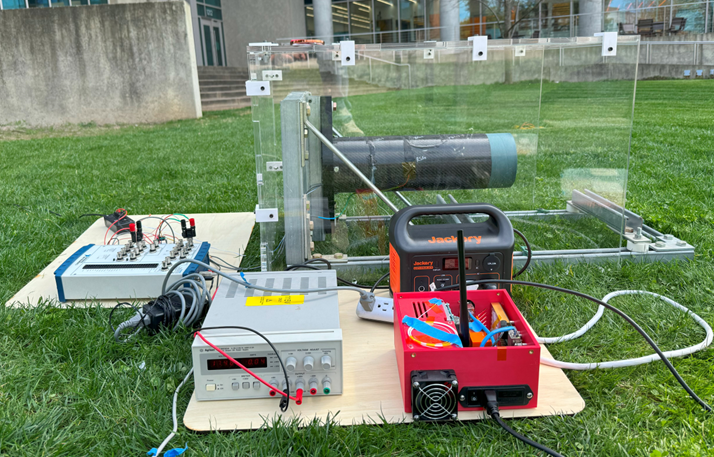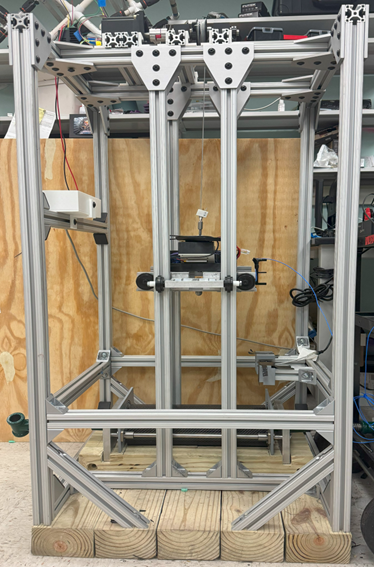Dynamic Strain Monitoring in Launch Vehicle Airframes

The reliance on Reusable Launch Vehicles (RLVs) is expected to increase as the space launch industry works towards reducing launch costs while focusing on sustainability. Monitoring the structural health of launch vehicle sections, especially those sustaining high dynamic loads and potential structural complications, is essential for re-flight certification.

The objective of our current studies is to examine dynamic strain in rocket vehicle sections subjected to high loads during blast-charge-based separation events. In this context of Structural Health Monitoring (SHM) of launch vehicles, surface mounted Fiber Bragg Gratings (FBGs) offer distinct advantages over Resistive Strain Gauges (RSGs).
The dynamic performance of FBG sensors and their comparison with RSGs is examined for dynamic impact studies on carbon fiber composite airframes using a calibrated impact test facility.
Publication:
- Thomas Colicci, Andrew Noonan, and Amrutur Anilkumar, ‘Structural Health Monitoring for Launch Vehicle Reusability Using Fiber Bragg Grating Written Optical Fiber’, AIAA-2025-0113, AIAA SCITECH 2025 Forum, Jan 6-10, Orlando, Fl. 2025.
- Thomas Colicci, Andrew Noonan, and Amrutur Anilkumar, ‘Implementing Fiber Bragg Grating Sensors for Dynamic Strain Monitoring in Carbon Fiber Launch Vehicle Airframes,’ submitted to the Review of Scientific instruments, November 2024.
Engine Health Monitoring
This is a study to assess the flow-related factors associated with real-time implementation of permittivity-based engine lubricant oil quality sensors as a step towards developing sensor-based machine learning algorithms for in situ engine health monitoring. Flow characteristics of clean oil at the chosen sensor location in the engine are visualized by adapting an external flow visualization cell. Sensor implementation on the engine follows detailed characterization on a benchtop facility emulating engine operating conditions of temperature and flow rate.


Oil quality measurements on the engine show a systematic difference from similar measurements on the benchtop facility. The presence of aeration through microbubbles in the engine oil flow, as compared with the benchtop oil flow, is hypothesized to be the reason for the bias in the electrical permittivity measurements, as these bubbles are a consistent part of the sensor’s sampling volume.

Successful implementation of oil quality sensors in engine oil flows will require systematic characterization of sensor performance under controlled aeration conditions in benchtop facilities with oil samples representing different levels of degradation. Planned additional investigations are on creating aerated flows in controlled bench top conditions to characterize sensor response using permittivity, density and viscosity measurements.
Publications:
- Adam Smith and Amrutur Anilkumar, ‘Friction Factor Evaluation of Replaceable-Element and Conventional Oil Filters in a Precision Benchtop Test Facility,’ SAE Int. J. Fuels Lubr. 15(3), 2022.
- Cameron Schepner, Adam Smith, David Schafer, and Amrutur Anilkumar, ‘In Situ Assessment of Oil Quality Sensor Performance in Engine Lubricant Flow,’ SAE Int. J. Fuels Lubr. 17(2):2024.